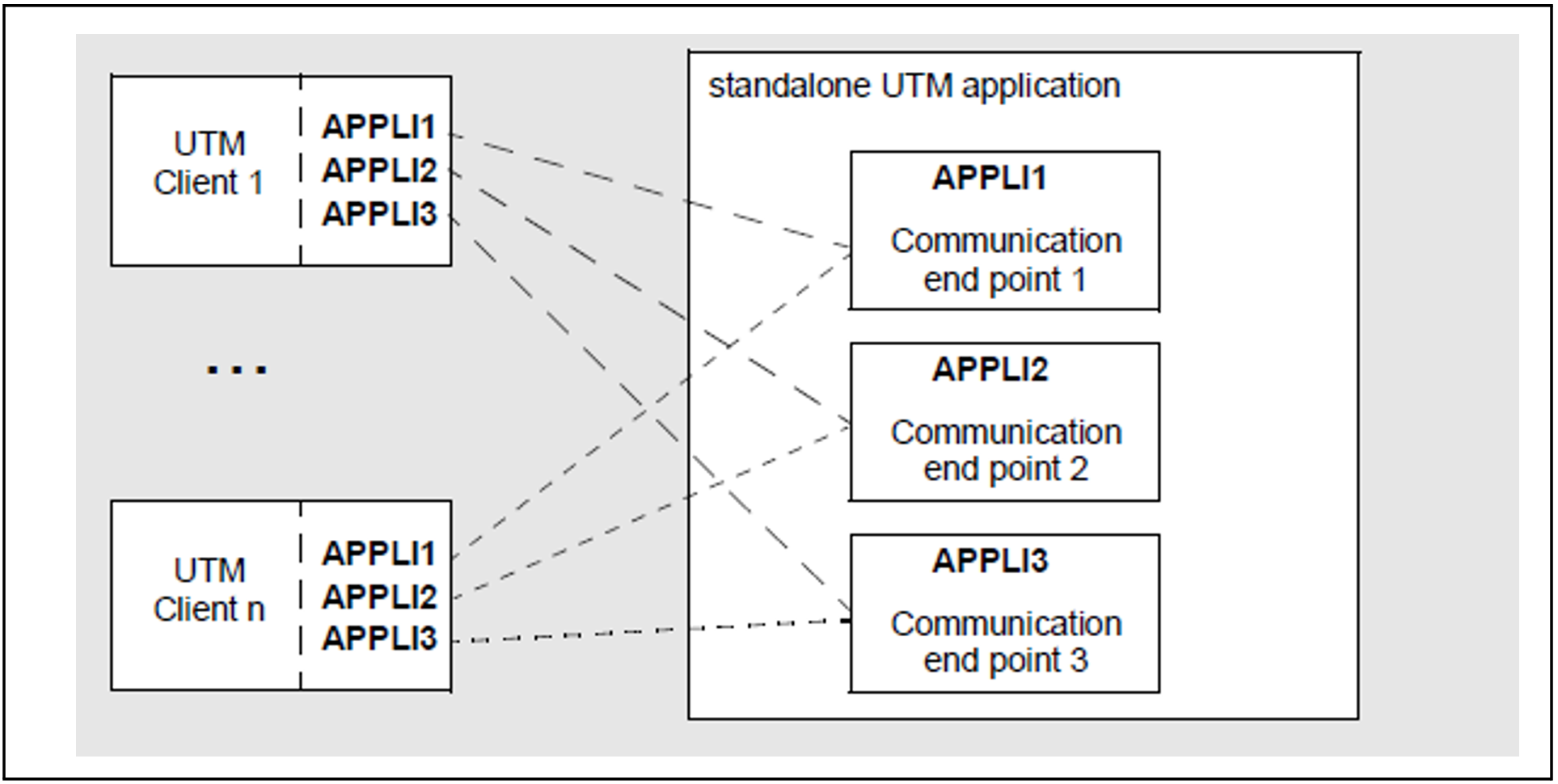UPIC-Remote enables communication and thus load to be distributed over multiple communication end points. This allows the implementation of “UPIC routing”. For example, if a very large number of clients (more than 1000) are communicating with a standalone UTM application on a Unix, Linux, or Windows system, it may be necessary to distribute the clients over multiple communication end points (BCAMAPPLs) in the UTM application. It is even possible to distribute communication over multiple standalone UTM applications. However, due to code conversion these should all be running on the same platform.
The client program requires a list of the associated communication end points for the UTM application(s). From this list, a random communication end point is then selected and is used to start the next communication. This random selection ensures client-side load balancing.
If communication is not possible with this selected communication end point, an attempt is automatically made to establish a connection with a different communication end point. Once again, this communication end point is selected randomly from the remaining entries in the list.
This process is repeated until a connection can be established with a communication end point for the UTM application or until it is detected that none of the communication end points from the list can be accessed.
The figure below shows a distribution of communication over three communication end points:
Figure 4: Communication of clients with multiple communication end points

